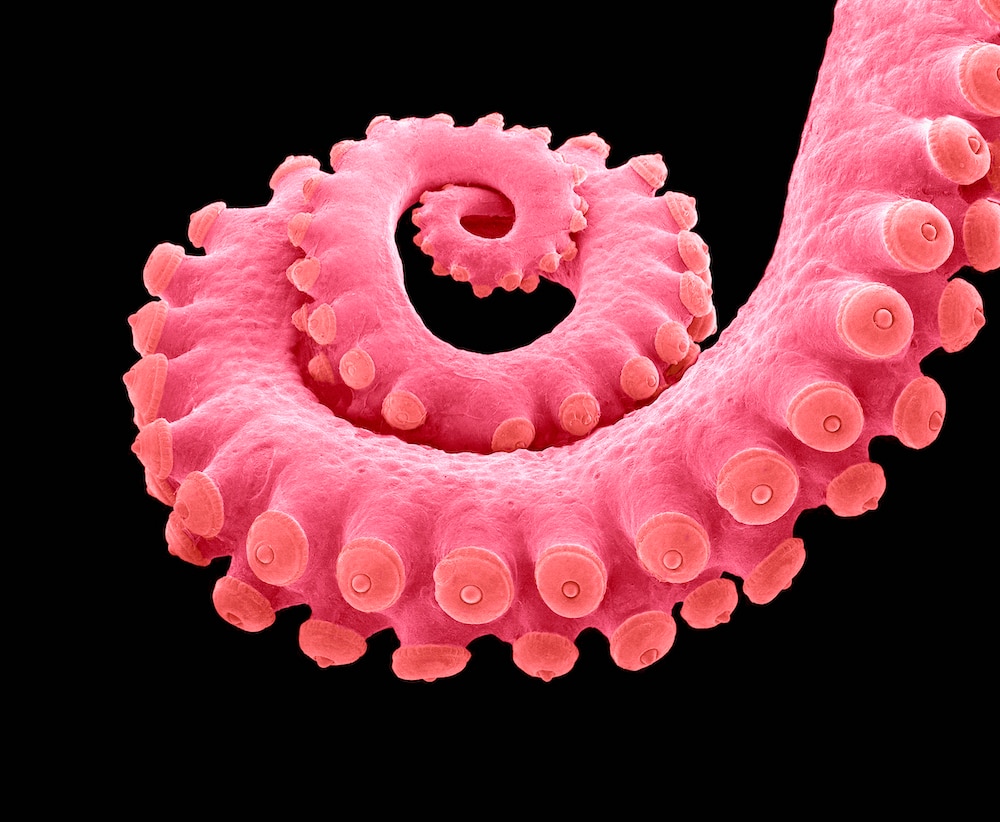Create a free profile to get unlimited access to exclusive videos, sweepstakes, and more!
Cthulhu genes? How cephalopods evolved huge brains and all those tentacles
This could explain why “octopus brain” was never an insult.

Cephalopods are bizarre creatures, but these Lovecraftian life-forms didn’t get their genes from Cthluhu, who supposedly lies dead and dreaming in the watery depths of R’lyeh.
You could argue that the appropriately named Octopus Head in Grimm is the other way around. This humanoid-cephalopod abomination was able to get his tentacles writhing inside the human brain to transmit terrifying memories, but that aside, we have some things in common that are not nightmare fuel. Humans can relate in a way because we also have unusually large brains and bodies and enormous genomes. New research has now found that cephalopod genomes are even stranger than the horror icons their tentacles inspired.
Octopus, squid, and cuttlefish are coleoid (not to be confused with Cthuloid) or soft-bodied cephalopods. After sequencing and studying three cephalopod genomes — from two species of octopus and one squid — researcher Caroline Albertin and her colleagues realized that their disproportionately large brains and ability to change color (among other things) are thought to be caused by genes getting reorganized over and over throughout their evolution. Albertin led one study and coauthored another, both recently published in the journal Nature.
"Genomes include all the genes that code for proteins, as well as the regulatory elements that dictate when and where a gene is expressed," she told SYFY WIRE. "A consequence of these reorganizations is that genes were put into new places in the genome, which can change how a gene is expressed."
To find out more about how cephalopods evolved to be so strange, the researchers analyzed the genomes of the octopi and squid before comparing them to see where certain octopus and squid features might have developed differently. Untangling a heap of tentacles would have been easier. The genomes turned out to have been remixed several times, especially in the early phases of their evolution. There were some gene families that experienced an explosion of expansion. Huge amounts of messenger RNA created guidelines for making proteins by using genetic information that had been edited, especially in their nervous systems.
So you might as well have thrown the genome of a squid or octopus in the blender several times over the hundreds of millions of years they’ve been around. Octopus and squid diverged from each other about 300 million years ago, which led to the spawning of new gene groups that started to make them what they are now. Unfortunately, much of the evidence for how this occurred is lost somewhere in time. Even more confusing is how the genomes of the three species studied were scrambled even when compared to each other. It sounds like you’d get something like Octopus Head in the end, but it is now thought all that rearranging is probably what made their nervous systems so complicated.
"RNA editing changes the sequence of the messenger RNA, which, when done in the part of the mRNA that codes for protein, can change the resulting protein sequence," said Albertin. "This is one way to produce different protein sequences from a single gene."
The genes of octopus and squid turned out to reveal some almost unbelievable things. Hundreds of genes were found to belong in groups that are exclusive to cephalopods. The squid brain is one of those features. Because that isn’t enough, some of these genetic groups are weirdly expanded. Just like us, our tentacled brethren have managed to duplicate genes known as protocadherins and expand on them. These belong to the superfamily of cadherins, which are involved in making cells adhere to each other for stability, and are mostly expressed in the nervous system. So many protocadherins can create an immense amount of neurons.
Cephalopods may also be so intelligent because they not only edit their RNA much more than other creatures, but they especially edit RNA in the nervous system. It is possible that editing this RNA has given cephalopods more flexibility in adapting to their environments. If they are able to edit a protein in response to a change in their surroundings, it makes them more likely to survive.
There were some groups of genes in the squid and octopus genomes that did things differently in each animal. Both have suckers on the undersides of their tentacles, which give them a strong grip, and sharp beaks to tear the flesh of their prey, but the gene group that creates these features in squid is completely different from that which creates them in the octopus. Albertin thinks that the rearrangement of genes might have given evolution the chance to change the way cephalopods use certain genes. It is as if they are living labs in themselves.
"We see that these rearrangements have resulted in new gene orders, bringing together genes from different genomic regions," she said. "This could change the expression of the genes. Genomic shuffling could have resulted in changes of expression in many of the rearranged genes, turning them on or off at different times and places, giving them new functions."
In squid and cuttlefish, the group of genes that creates suckers with sharp toothlike structures is known as suckerins. No suckerins are present in the octopus genome even though every octopus has suckers with teeth. They somehow figured out how to adapt, which is where RNA editing comes in again. It is possible that this is what made them able to morph color and shape. Reflectins are the gene group that can conjure this magic.
Maybe cephalopods have been fodder for many fictional monsters, but if you’ve ever doubted what they are capable of, just watch an octopus free itself from an escape room.


























